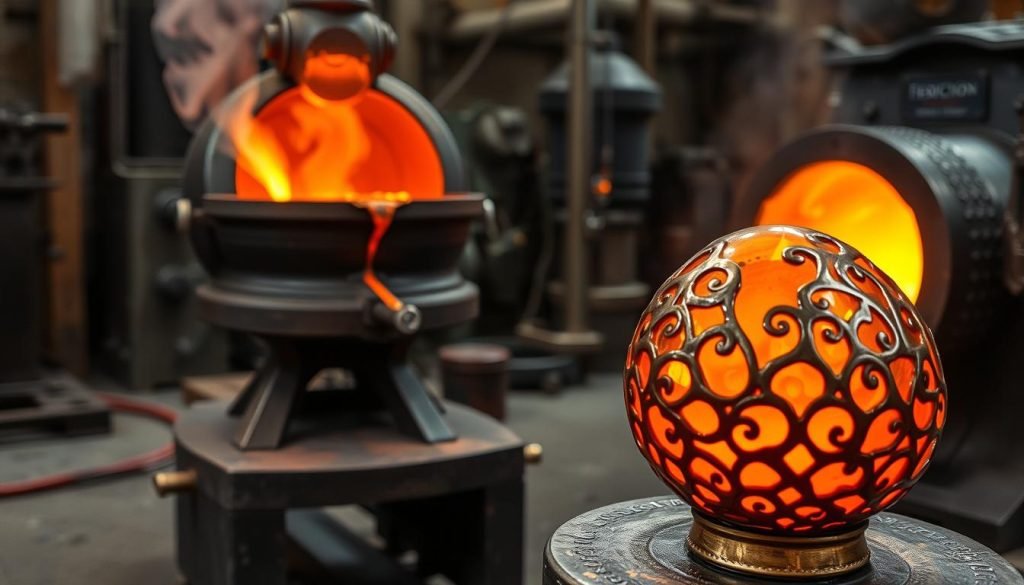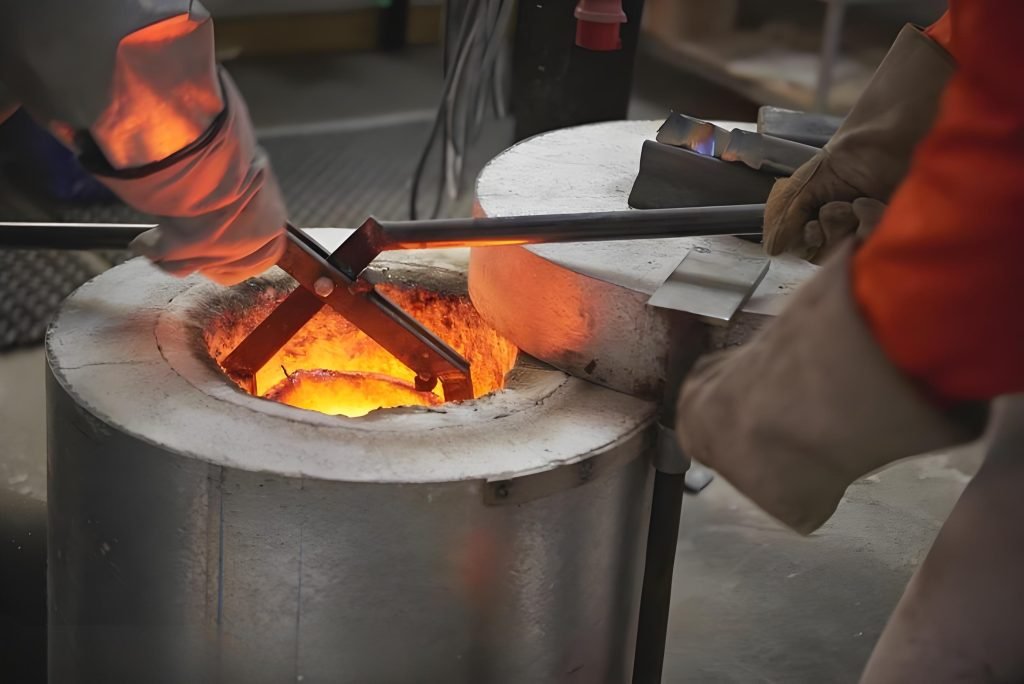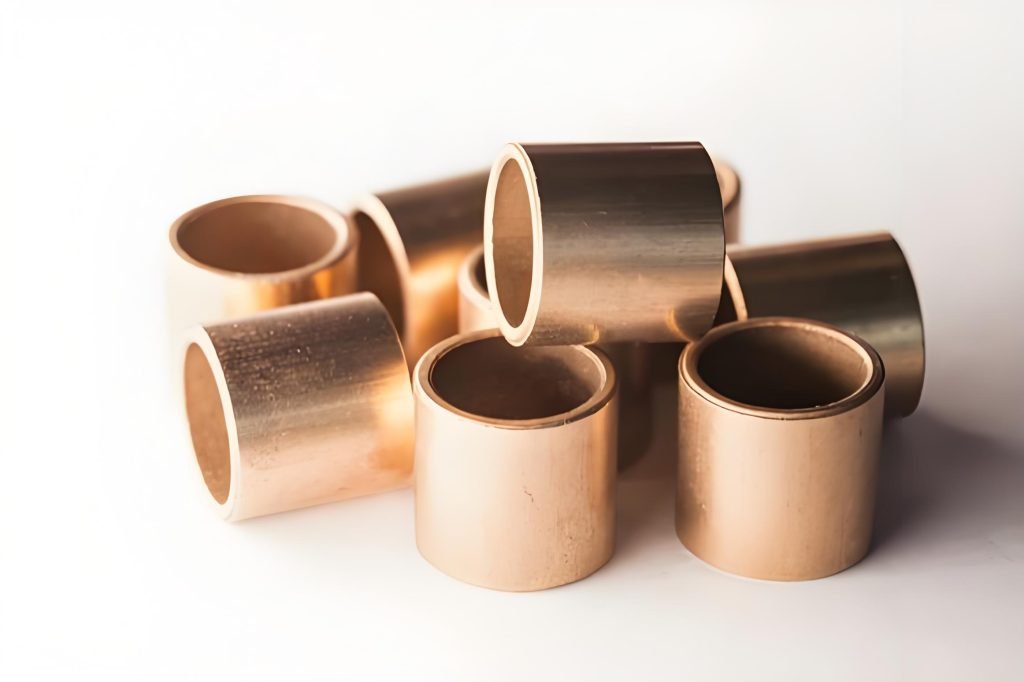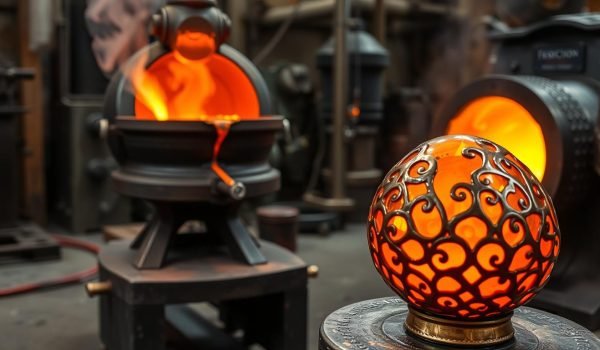Have you ever wondered what makes bronze a preferred material for various industrial applications, from casting to machining? The answer lies in its unique properties, particularly its melting behavior.

point that varies depending on the ratio of its components. Typically, it ranges around 950°C (1,742°F).
Understanding the melting characteristics of bronze is crucial for manufacturers, engineers, and designers who work with this versatile alloy. The composition of bronze directly influences its melting point, making it essential to select the right alloy for specific applications where temperature resistance is critical.
The Fundamentals of Bronze as an Alloy
The alloy known as bronze is primarily composed of copper and tin, offering a unique blend of strength and durability. This combination has made bronze a crucial material throughout history, particularly during the Bronze Age, when it was used extensively for tools, weapons, and artistic creations.
What Makes Bronze Unique Among Metal Alloys
Bronze stands out among metal alloys due to its exceptional combination of properties, including strength, durability, and corrosion resistance. The addition of approximately 12-12.5% tin to copper creates an alloy that is harder than pure copper, yet maintains excellent casting properties and resistance to wear. This unique blend has made bronze a preferred choice for various applications, from tool-making to artistic expression.
Composition of Bronze and Its Influence on Melting Point
The composition of bronze is a critical factor in determining its melting point, a characteristic that significantly influences its applications in various industries. Bronze is primarily an alloy of copper and tin, with the proportions of these metals varying to achieve specific properties.
Primary Components: Copper and Tin
The primary components of bronze are copper and tin. Modern bronze is typically about 88% copper and 12% tin. The interaction between copper and tin at the molecular level creates an alloy with unique thermal properties that differ from those of the individual metals. The copper-tin ratio can be adjusted to raise or lower the melting point, allowing manufacturers to create bronze alloys optimized for specific applications.
Common Additives and Their Effects
Besides copper and tin, other elements are often added to bronze to modify its properties. Common additives include zinc, phosphorus, aluminum, and lead. Zinc typically lowers the melting point of bronze, while phosphorus can increase its hardness and wear resistance. These additives significantly alter bronze’s melting behavior and physical properties, making it suitable for a wide range of applications.
How Composition Affects Physical Properties
The composition of bronze directly affects its physical properties, including its melting point. Understanding how different compositions influence these properties is crucial for manufacturers. By precisely controlling the alloy composition, modern bronze manufacturers can achieve consistent and predictable melting behavior for various industrial applications. This control allows for the optimization of bronze alloys for specific uses, such as in the manufacture of coins, springs, turbines, and blades.
The Science Behind Bronze Melting Point
The science behind bronze’s melting point involves intricate metallurgical principles that govern its transition from solid to liquid. As you explore the world of metal alloys, understanding the melting behavior of bronze is crucial for optimizing its use in various applications.
Understanding Melting Points in Metal Alloys
Melting points in metal alloys, such as bronze, differ significantly from those of pure metals. Unlike pure metals, which melt at a specific temperature, alloys typically melt over a range of temperatures. This range is due to the different melting points of the constituent metals, in this case, copper and tin. The melting point of bronze is around 950 °C (1,742 °F), but it varies depending on the ratio of copper to tin.
Phase Transitions in Bronze
As bronze is heated, it undergoes various phase transitions. Initially, it remains solid until it reaches its solidus temperature. As the temperature increases, it begins to melt, transitioning into a mixed solid-liquid phase until it reaches its liquidus temperature, at which point it becomes fully liquid. Understanding these phase transitions is essential for controlling the casting and forming processes, ensuring that the final product meets the desired specifications.
The atomic structure of bronze changes significantly during the melting process. The copper and tin atoms rearrange as the material transitions from a crystalline solid to a liquid state. This process involves the absorption of heat, known as the latent heat of fusion, during which the temperature remains constant while the material changes state.
Bronze Melting Point: Standard Ranges and Variations

The melting behavior of bronze is influenced by its alloy components, affecting its melting point. Bronze, primarily composed of copper and tin, exhibits a melting point that can vary significantly based on the ratio of these components. Understanding these variations is crucial for manufacturers and craftsmen working with bronze.
Typical Melting Point Range for Standard Bronze
Standard bronze typically melts within a temperature range of 930-950°C (1,706-1,742°F). This range can shift based on the specific composition of the alloy, including the proportions of copper and tin. For instance, aluminum bronze has a slightly higher melting point, ranging from 1,027-1,038°C (1,881-1,900°F).
Comparing Bronze Melting Points to Other Common Metals
When compared to other metals, bronze has a relatively moderate melting point. It’s lower than that of steel (1,425-1,540°C) and iron (1,538°C), but higher than lead (327.5°C) and zinc (420°C). This characteristic made bronze historically easier to cast into complex shapes, contributing to its widespread use in ancient civilizations.
Measuring and Testing Melting Points
Accurate measurement of bronze’s melting point is crucial for manufacturing processes. Techniques such as differential scanning calorimetry (DSC) and traditional observation methods are used to determine the melting point. Understanding the melting point helps manufacturers set appropriate furnace temperatures, ensuring complete melting while preventing overheating that could damage the material.
Different Types of Bronze and Their Melting Points
Different bronze alloys exhibit a range of melting points based on their composition. You will find that various formulations of bronze are designed to optimize specific properties for particular applications.
Classic Bronze (88% Copper, 12% Tin)
Classic bronze, composed of 88% copper and 12% tin, represents a standard formulation with a melting point around 950°C (1,742°F). This alloy offers excellent casting properties and corrosion resistance, making it suitable for various applications.
Aluminum Bronze
Aluminum bronze contains 5-11% aluminum and has a higher melting point of approximately 1,027-1,038°C (1,881-1,900°F). This alloy provides superior strength and excellent resistance to wear and corrosion, making it ideal for demanding applications.
Silicon Bronze
Silicon bronze, with a composition of 2.80-3.80% silicon, offers excellent corrosion resistance. Its melting point is around 980-1,000°C (1,796-1,832°F), making it suitable for marine applications and artistic castings.
Phosphor Bronze
Phosphor bronze contains small amounts of phosphorus (0.5-1.0%) and has a melting point similar to classic bronze. However, it offers improved spring qualities and fatigue resistance, making it valuable for electrical components and springs.
Understanding the melting characteristics of different bronze types helps manufacturers select the appropriate alloy for specific applications, whether they require ease of casting, corrosion resistance, or mechanical strength.
The Role of Tin and Copper Ratios in Bronze Melting Points
The proportion of tin to copper significantly influences the melting characteristics of bronze alloys. Bronze, an alloy primarily composed of copper and tin, exhibits a range of melting points based on the specific ratio of these two metals. Understanding this relationship is crucial for both historical context and modern manufacturing processes.
How Varying Tin Content Affects Melting Temperature
Varying the tin content in bronze alloys directly impacts their melting temperatures. Generally, a higher tin content lowers the melting point compared to pure copper. For instance, “classic bronze” with around 10% tin is used for casting and has a lower melting point, while “mild bronze” with about 6% tin is used for hammered items and has a higher melting point. The metallurgical science behind this phenomenon involves tin atoms disrupting copper’s crystalline structure, weakening interatomic bonds and resulting in a lower melting point.
You can observe this effect in different bronze formulations, where tin content ranging from 4% to 12% creates distinct melting characteristics. Lower tin content (4-6%) results in a higher melting point, while higher tin content (10-12%) creates a lower melting point more suitable for casting.
Optimal Ratios for Different Applications
For cast objects like weapons and statues, higher tin content (around 10%) was used, while for hammered items like armor and sheets, lower tin content (around 6%) was preferred. Modern manufacturers also benefit from understanding these ratios, as they help in selecting the appropriate bronze formulation for specific casting or forming processes.
Different applications require different copper-tin ratios, such as electrical components needing good conductivity or marine hardware requiring superior corrosion resistance. Precise control of the copper-tin ratio is essential for achieving consistent melting behavior in modern manufacturing.
Factors Affecting the Melting Point of Bronze
When working with bronze, it’s essential to consider the factors that affect its melting point. The melting point of bronze, typically around 950 °C (1,742 °F), can vary significantly based on several factors beyond just its copper and tin composition.
Impurities and Their Impact
Impurities, whether intentional alloying elements or unintentional contaminants, can significantly impact bronze’s melting behavior. Elements like lead and zinc typically lower the melting point, while iron may raise it. Understanding the role of these impurities is crucial for predicting and controlling the melting point of bronze.
Environmental Conditions During Melting
Environmental conditions such as atmospheric pressure, humidity, and ambient temperature also play a role in the melting process. For instance, higher altitudes (lower pressure) can slightly reduce the melting point. Manufacturers must consider these factors to achieve consistent results when melting bronze for casting or other forming operations.
Equipment and Technique Considerations
The type of furnace, crucible material, and heating rate can affect the apparent melting point and overall quality of the molten bronze. Modern metallurgical techniques allow for precise control of these variables, ensuring predictable melting behavior and consistent material properties. The cooling rate after melting also influences the final properties of the bronze, with slower cooling generally producing larger grain structures and different mechanical characteristics.
Safety Measures for Handling Bronze at High Temperatures
As you work with bronze at elevated temperatures, it’s crucial to implement safety precautions to protect yourself from potential hazards. Bronze, an alloy primarily made of copper and tin, has a melting point of around 950°C (1,742°F), which can vary depending on the ratio of its components.
Personal Protective Equipment Requirements
When handling molten bronze, you’ll need proper personal protective equipment (PPE) to prevent injuries. This includes heat-resistant clothing, face shields, and gloves designed to withstand high temperatures. Foot protection is also essential to safeguard against splashes or spills of molten metal.
Workspace Setup and Ventilation
A well-organized workspace is vital for safe bronze melting operations. Ensure your workspace has refractory surfaces, clear pathways, and dedicated areas to minimize accident risks. Proper ventilation is also critical, as melting bronze can release harmful fumes, especially if it contains elements like zinc, lead, or phosphorus. Adequate exhaust systems and possibly respiratory protection are necessary.
Emergency Procedures and Common Hazards
It’s essential to be prepared for emergencies when working with molten bronze. Common hazards include thermal burns, metal splashes, fire risks, and fume inhalation. Establishing emergency procedures such as proper first aid for burns, fire suppression techniques, and evacuation protocols can help mitigate these risks.
Applications and Importance of Bronze Melting Point in Manufacturing

Bronze’s melting behavior is a key factor in its widespread industrial applications. You can see its importance in the manufacturing of complex components, where bronze’s relatively low melting point compared to steel makes it easier to cast into intricate shapes with fine details.
The melting point of bronze determines its suitability for various applications, including bearings and bushings, where its low friction properties make it ideal for use in electric motors, automotive transmissions, and industrial machinery. Different bronze alloys, such as phosphor bronze for electrical connectors and aluminum bronze for high-strength marine hardware, are selected based on their melting points and mechanical properties.
Understanding the relationship between bronze’s melting point and its mechanical properties helps engineers design components that maintain dimensional stability at specific operating temperatures. Modern manufacturing techniques, including investment casting and centrifugal casting, leverage bronze’s melting characteristics to create precision parts.
Conclusion
In conclusion, the melting point of bronze is a vital property that influences its use. You’ve learned how the ratio of copper to tin affects the melting point, with standard bronze (88% copper, 12% tin) melting at approximately 950°C (1,742°F). Different bronze alloys, such as aluminum bronze and phosphor bronze, have unique thermal properties suited to specific applications. Understanding these properties and safety considerations when working with bronze at high temperatures is crucial. By grasping these concepts, you can optimize manufacturing processes and leverage bronze’s corrosion resistance and mechanical properties.




